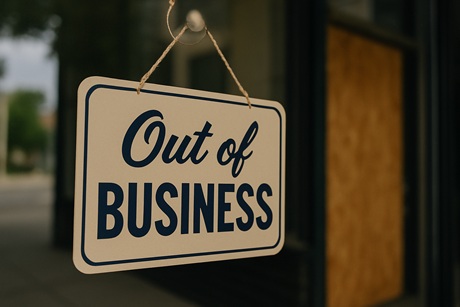
Investors often rely on the perceived stability of long-standing companies to anchor portfolios. Yet recent decades have exposed a different reality: the average lifespan of publicly traded firms is shrinking. While some companies defy time, the majority exit public markets far sooner than most models anticipate. This disconnect between assumed longevity and actual corporate life expectancy poses risks that are still underestimated in traditional investment frameworks.
The assumption of permanence shapes everything from discounted cash flow projections to strategic asset allocation. But permanence is increasingly the exception. Recognizing this shift is not just about accuracy — it’s about avoiding blind spots that erode long-term returns. The illusion of corporate durability invites complacency, especially in long-hold or passive strategies that rarely question the narrative behind each holding.
This article examines the fading permanence of corporations and the investment behaviors that ignore it. As the pace of disruption increases, understanding how — and why — companies vanish becomes as important as tracking those that survive. Rethinking portfolio construction through this lens is not an option. It’s a necessity.
Corporate lifespans have contracted significantly over the past decades. In 1965, companies listed on the S&P 500 remained on the index for an average of approximately 33 years. Today, that number is below 20 — and projections suggest it may fall further. This reflects a market increasingly defined by technological disruption, fast capital rotation, and accelerated obsolescence of business models.
The chart below illustrates the decline in average company tenure on the S&P 500, using data compiled from EY and McKinsey research. The visual makes one point clear: corporate permanence is fading, and investment strategies must adapt to a reality where portfolio turnover — at the index level — is not just normal, but systemic.
Traditional valuation models, particularly those projecting earnings over multi-decade horizons, implicitly assume corporate stability. They forecast based on past margins, growth trajectories, and market share — all of which presuppose that the business will endure. But as the data shows, many companies don’t get the chance to prove or disprove those projections. They simply disappear from the investable universe altogether.
This misalignment has direct consequences. Investors may be anchoring their long-term returns to assumptions that will never materialize, not because the model is wrong, but because the subject has ceased to exist. As more businesses face existential pressure earlier in their lifecycle, the average discount model becomes increasingly abstract.
The market has become faster, more unforgiving, and more crowded with short-lived ventures. Investment due diligence must now include assessments of a company’s adaptability, governance resilience, and long-term relevance — not just its revenue growth or EBITDA margin.
If most companies fade, what distinguishes those that endure? While there’s no single formula, long-lived companies tend to share a few key characteristics: cultural adaptability, decentralized innovation, long-term capital discipline, and governance structures that evolve with the business. These attributes may not appear in financial statements, but they’re foundational to corporate longevity.
Survivors are often not the most aggressive, but the most coherent. They make fewer promises and more decisions. They change when they don’t need to. And above all, they sustain a narrative that remains relevant across market cycles, customer generations, and technological shifts.
Investors would benefit from weighting these traits more heavily than they traditionally do. An overemphasis on short-term outperformance often overlooks the conditions that allow a business to make it to the next chapter — or the next decade. Adaptability, in this context, is not just a strategic asset; it’s a survival mechanism.
When companies can’t be assumed to last, portfolios can’t afford to rest. Active ownership and intentional rebalancing are no longer optional — they are the cost of realism. Investors need frameworks that challenge permanence, reward relevance, and detect obsolescence early. This does not mean constant turnover, but it does require constant interrogation.
Position reviews should include horizon risk: how likely is it that this company will survive the life of the model? How aligned is its capital structure, board composition, or market approach with sustainability over time? Ignoring these questions invites strategic drift and statistical exposure to a shrinking corporate base.
The illusion of permanence must be replaced with a discipline of review. This is especially true for passive allocations and benchmark tracking, where legacy weightings can conceal atrophy. Even the strongest index is a snapshot, not a verdict.
In a world where the average corporate lifespan is falling, the investor’s job is not to predict who will last, but to monitor what still matters. Strategic clarity comes from asking not how long a company has existed, but whether it is likely to persist — and why. Duration without direction is not stability. It’s entropy.
At Pivolt, we help firms challenge assumptions embedded in portfolios. Our platform surfaces horizon risks, visualizes long-term relevance, and enables more dynamic allocation strategies. Because the longer your forecast, the more important it is to revisit your premise.
The illusion of permanence may be comfortable — but in today’s market, it’s also expensive.